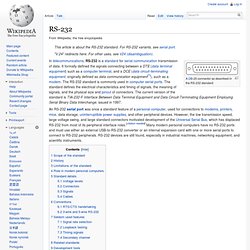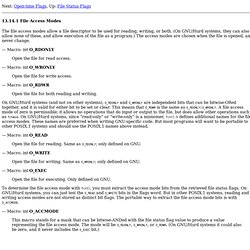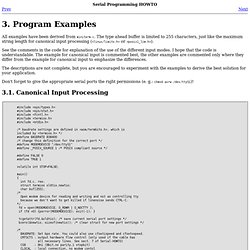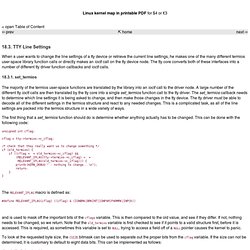

Bluetooth Serial Connection Help. Re: how to add the bluetooth rfcomm0 device at boot up automatically with debian. [Date Prev][Date Next] [Thread Prev][Thread Next] [Date Index] [Thread Index] Re: how to add the bluetooth rfcomm0 device at boot up automatically with debian.

On Mon, Aug 20, 2007 at 05:53:10PM -0400, Michael Habashy wrote: > i am trying to automate how my debian box acknowledges that there is a > bluetooth device attached to my bluetooth dongle. > Does anyone know how i can do that automatically at boot up? > In order for me to create the rfcomm0 device, I have to execute: > 1. hcitool scan ---to get the mac address. > 2. rfcomm bind 0 00:0E:07:14:80:A9 ---to create the rfcomm0 device.
You could put those in /etc/rc.local Regards, Andrei -- If you can't explain it simply, you don't understand it well enough. (Albert Einstein) Universal Serial Bus. USB-Symbol Altes USB-Logo, das nicht mehr verwendet werden soll Überblick[Bearbeiten] Einsatzgebiete von USB[Bearbeiten] Im Vergleich zu den früheren Lösungen bietet USB deutlich höhere Datenübertragungsraten.

USB Protocol Specification. This chapter deals with the way of organising the data flow between a computer equipped with the USB hub and various USB devices connected to it. USB is a serial bus meaning that there is only one line transmitting signals, so only 1 bit can be sent at one instance of time. Therefore, in order to provide error checking, flow control and to synchronize the devices, information is organised in the form of packets and frames. This, in turns, forces a standard header and a tail of each packet indicating the portion of data in between them. Since all types of information are exchanged using packets, they must be differentiated accordingly to their function and version of the protocol. The division into a number of fields of specific meaning defined by the specification allows easy identification and unambiguous interpretation.
USB30BastianLindner. Documents. Universal Serial Bus Revision 3.1 Specification (.zip file format, size 29.8 MB) provides the technical details to understand USB 3.1 requirements and design USB 3.1 compatible products. Modifications to the USB 3.1 specification are made through Engineering Change Notices (ECNs). Enclosed in this zip file are the following documents: RS-232. A DB-25 connector as described in the RS-232 standard In telecommunications, RS-232 is a standard for serial communication transmission of data.

It formally defined the signals connecting between a DTE (data terminal equipment) such as a computer terminal, and a DCE (data circuit-terminating equipment, originally defined as data communication equipment[1]), such as a modem. Serial Programming/termios. Introduction [edit] termios is the newer (now already a few decades old) Unix API for terminal I/O.

The anatomy of a program performing serial I/O with the help of termios is as follows: Open serial device with standard Unix system call open(2)Configure communication parameters and other interface properties (line discipline, etc.) with the help of specific termios functions and data structures.Use standard Unix system calls read(2) and write(2) for reading from, and writing to the serial interface. Access Modes - The GNU C Library. 13.14.1 File Access Modes The file access modes allow a file descriptor to be used for reading, writing, or both.

(On GNU/Hurd systems, they can also allow none of these, and allow execution of the file as a program.) The access modes are chosen when the file is opened, and never change. — Macro: int O_RDONLY Open the file for read access. — Macro: int O_WRONLY. Ports benutzen (GCC) Über die Ansteuerung der Schnittstellen unter Linux findet man im Internet überall etwas anderes.

Program Examples. All examples have been derived from miniterm.c.

The type ahead buffer is limited to 255 characters, just like the maximum string length for canonical input processing (<linux/limits.h> or <posix1_lim.h>). See the comments in the code for explanation of the use of the different input modes. I hope that the code is understandable. The example for canonical input is commented best, the other examples are commented only where they differ from the example for canonical input to emphasize the differences.
18.3. TTY Line Settings. 18.3.

TTY Line Settings When a user wants to change the line settings of a tty device or retrieve the current line settings, he makes one of the many different termios user-space library function calls or directly makes an ioctl call on the tty device node. The tty core converts both of these interfaces into a number of different tty driver function callbacks and ioctl calls. Termios(3) - Linux manual page. Understanding UNIX termios VMIN and VTIME. The POSIX "termios" structures are at the center of serial-port I/O control, and there are many knobs and switches to turn here.

The stty program is actually a command-line wrapper around the termios struct, and it should be apparent that this whole arena is filled with arcana, obscura, historical artifacts, and even nostalgia. A single Tech Tip can't possible cover them all, but it can at least touch on one area of common confusion: the use of VMIN and VTIME. These are macros used as indexes into the termios.c_cc[] array, which under normal circumstances holds the list of special control characters (backspace, erase, line kill, interrupt, etc.) for the current session. But when the ICANON bit is turned off, a "raw mode" is selected which changes the interpretation of these values. These are used to guide the line-driver code in its decision on allowing the read() system call to return.
NOTE: This is not a tutorial on termios programming as a whole. Function-key processing. Termios. How to find which device is attached to a USB-serial port in Linux using C. Tcsetattr. Termios, tcgetattr, tcsetattr, tcsendbreak, tcdrain, tcflush, tcflow, cfmakeraw, cfgetospeed, cfgetispeed, cfsetispeed, cfsetospeed, tcgetpgrp, tcsetpgrp - get and set terminal attributes, line control, get and set baud rate, get and set terminal foreground process group ID #include <termios.h> #include <unistd.h> int tcgetattr(int fd, struct termios *termios_p); int tcsetattr(int fd, int optional_actions, struct termios *termios_p); int tcsendbreak(int fd, int duration);
